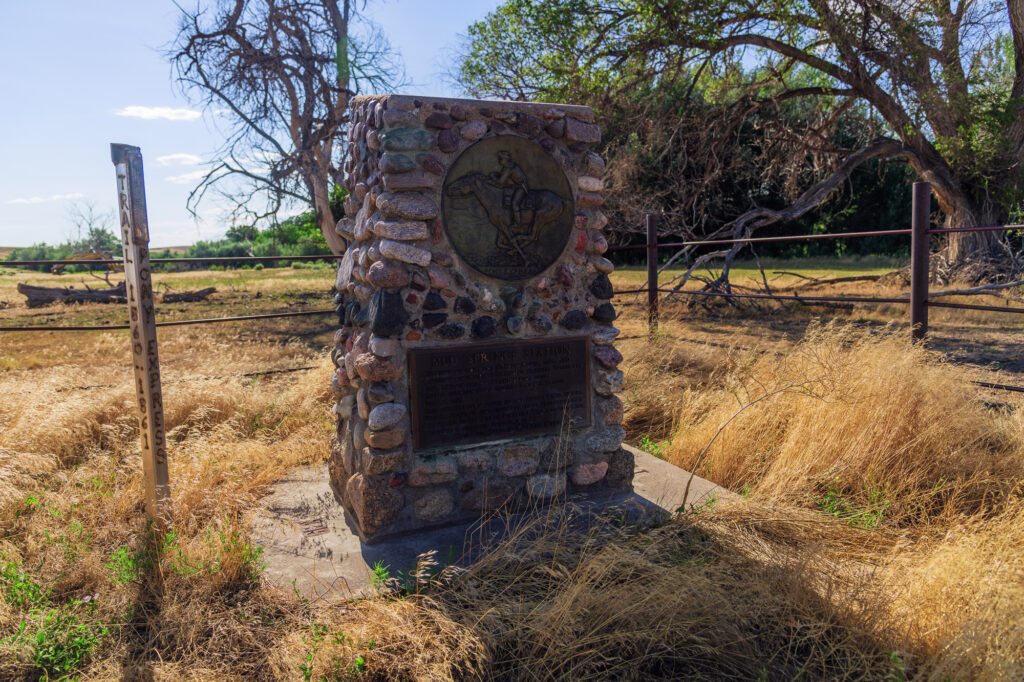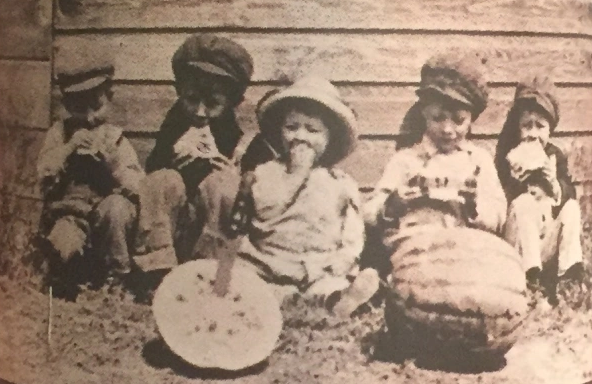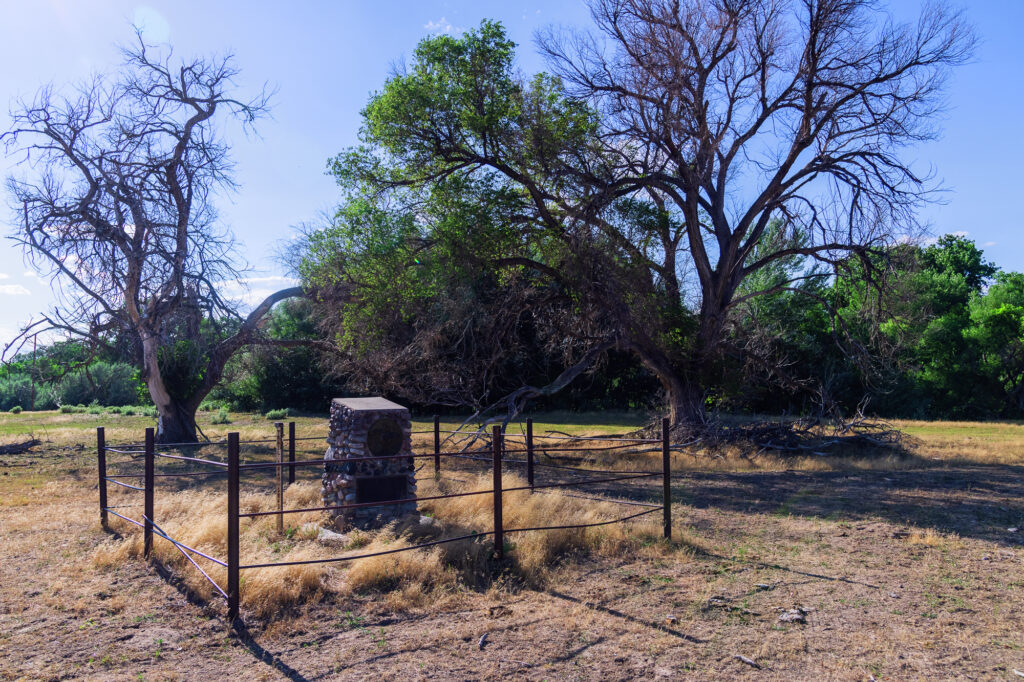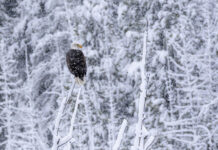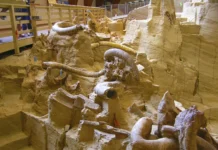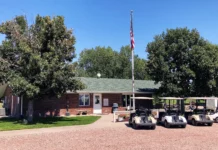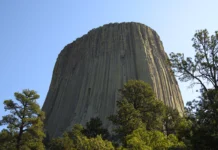| NEBRASKA |
There’s a little-known location full of history in Western Nebraska. Arriving at this location leaves visitors anxious from the moment they arrive until they depart.
| REMNANTS OF A DREAM
On US Highway 385, halfway between Bridgeport and Dalton, near an old Chicago, Burlington, and Quincy Railroad siding named Simla, stands a Nebraska Historical Marker, whose text reads:
“Mud Springs, so-named for its seeps of water, was an oasis on the dry plateau between Lodgepole Creek and the North Platte River. Overland travelers began using the springs in the late 1850s when a cutoff was laid out from Old Julesburg to intersect the North Platte valley trail near Courthouse Rock. In 1860-61 the famed Pony Express followed the cutoff, building a log and sod “home station” at Mud Springs. The station became a stop on the overland stagecoach route in 1861, then a telegraph office when the line reached there that August, ending its use by the Pony Express. On February 4-6, 1865, Sioux and Cheyenne warriors attacked Mud Springs after sacking Julesburg in retaliation for Col. John M. Chivington’s massacre of peaceful Cheyennes at Sand Creek, Colorado, the previous November. The nine soldiers held out until reinforcements arrived, and the warriors withdrew. The telegraph station was abandoned about 1877. In 1939 Etta Scherer and her children deeded the Mud Springs Station site to the Nebraska State Historical Society. It is listed in the National Register of Historic Places.“
| ESTABLISHMENT OF MUD SPRINGS
Before fur trappers and pioneers crossed the Great Plains, Mud Springs, and the surrounding area had been occupied for centuries by Native American tribes, fur traders from Spain, France, and America had been exploring every body of running water from the Mississippi River to the Pacific Ocean since the 1820s. They had used this shortcut along the Platte River to travel to and from the Rocky Mountains since at least 1824.
They also had a frequent habit of dying out here. A French trapper named Gonneville, a member of the party who discovered the skeletal remains of Hiram Scott in 1830, was killed in a fight with Indians near the stream that would bear his name for many years until it was rechristened, Pumpkin Creek.
Another, named Lowell, died on the Lawrence Fork a few years later, and many others vanished into the wilderness, never to be seen again, the victims of malnutrition, disease, the brutal WyoBraska winters, or simply getting on the wrong side of the natives, both two and four-legged.
By the late 1850s, Overland travelers had begun using a cutoff from Julesburg, Colorado, which intersected a North Platte River valley trail near Courthouse Rock. They used the seep springs, which rise to the earth’s surface at the end of a long canyon between the North Platte River valleys and Lodgepole Creek, as an oasis after traveling the dry, dusty plateaus. These early pioneers often found the area around the springs mudded, trampled from the hooves of the enormous herds of buffalo, who used the springs as a water source. Thus Mud Springs received its inelegant moniker.
By 1859, sod buildings had been erected at McArdle’s Ranch at Mud Springs, with roofs constructed of poles, brush, and soil. A layer of coarse gravel was poured over the roofs to keep the relentless Nebraska wind from blowing the brush and dirt to kingdom come. These simple structures served the stage line, carrying mail, passengers, and freight across the Great Plains. McArdle’s Ranch soon became known simply as Mud Springs and was not renowned for its first-class accommodations.
One 1860s stage passenger called the station “a dirty hovel, serving tough antelope steaks, fried on a filthy stove, with wooden boxes serving as chairs at a bench-like table.” Rather than sleep in the shanty that passed for overnight lodging, he wrapped himself in a filthy buffalo robe and spent the night in an abandoned wagon.
In 1860, the short-lived Pony Express established a home station at the site to provide its riders with fresh horses, meals, and shelter. In August of 1861, the last Pony Express rider left Mud Springs, carrying a message from the telegraph that finally reached Nebraska. Soon, the line would extend to Salt Lake City, Utah, ending the Pony Express’s epic journeys across the plains.
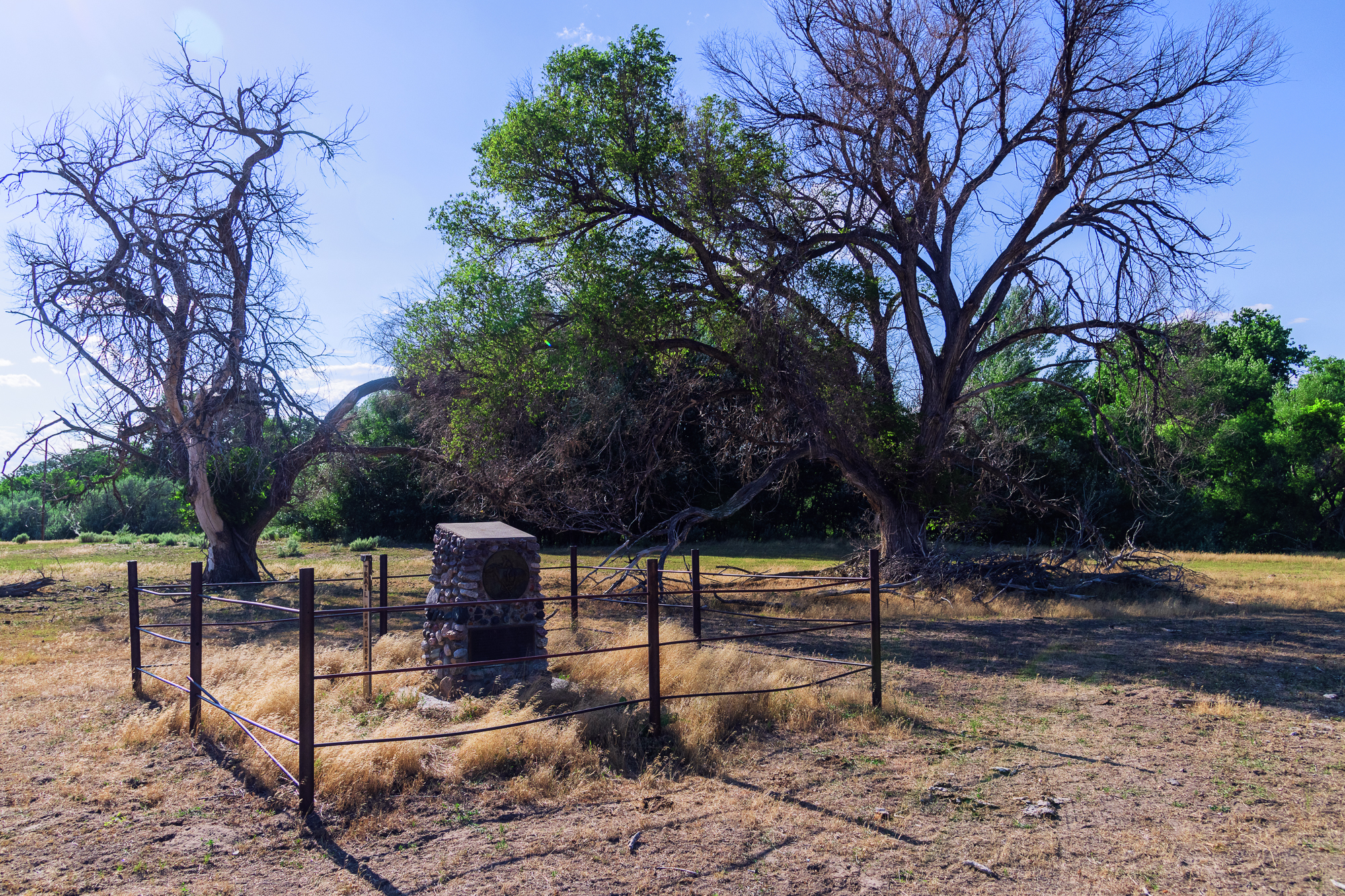
| THE BATTLE OF MUD SPRING
The most memorable event in the history of Mud Springs began on February 4th, 1865. On that day, Colonel William O. Collins of the 11th Ohio Volunteer Cavalry stationed at Fort Laramie received a frantic telegram stating that many Indians were attacking the Mud Springs station. At the time of the attack, the only occupants of Mud Springs were nine soldiers and five civilians. Colonel Collins then ordered Lt. William Ellsworth, stationed at Fort Mitchell, fifty-five miles west of Mud Springs, to rush to the station with all the men he could spare.
Ellsworth, and thirty-six men of Company H of the 11th Ohio, rode nonstop through the night to reach Mud Springs and immediately engaged in battle with an estimated 500-1000 Cheyenne, Arapaho, and Sioux warriors.
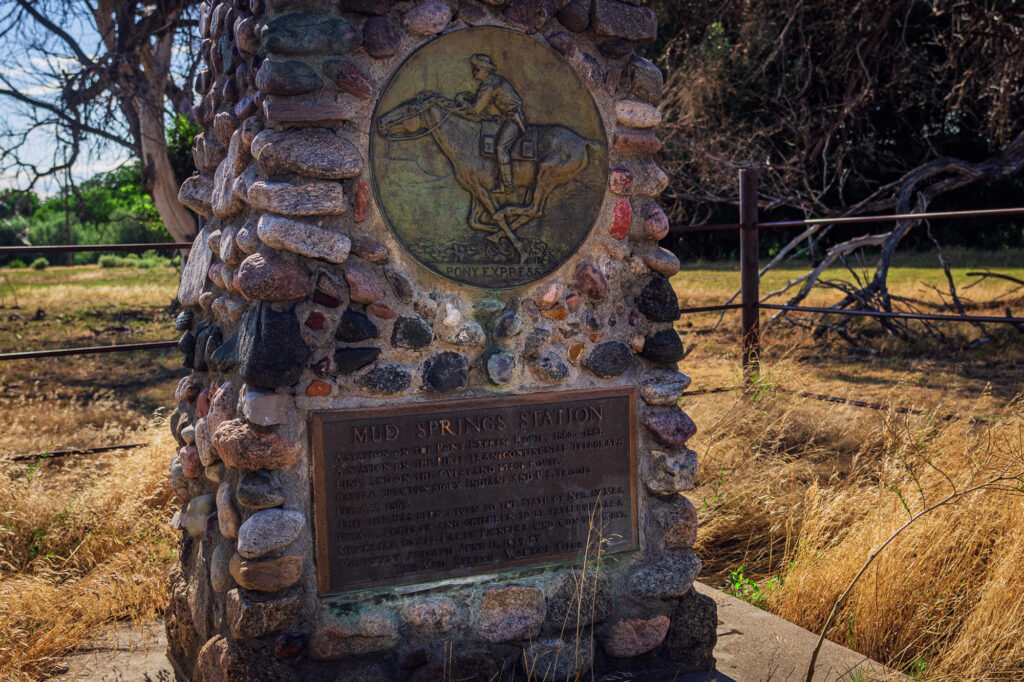
By the afternoon of February 6th, Colonel Collins had arrived with another 120 men. The soldiers were forced to hide behind a breastwork made of four overturned wagons formed into a corral until an additional fifty soldiers arrived that evening with a 12-pounder mountain howitzer gun (left), with a range of over 1000 yards (one of these formidable weapons is on display at Fort Laramie in Wyoming. © Hawk Buckman)
Somehow, Colonel Collins and his heavily outnumbered and outgunned troops managed to survive what would be called the Battle of Mud Springs, with only eight men wounded and one killed. Collins, in what was arguably not the wisest of decisions, then decided to push his luck and pursue the leisurely retreating Indians, who numbered an estimated 5000 men, women, and children, to a series of bluffs five miles north of the solidly frozen North Platte River, near present-day Broadwater, Nebraska.
By February 10th, after several casualties and at least ten cases of frostbite among his exhausted troops, Colonel Collins began a long, cold journey back to Fort Laramie. His foolhardy assault became known as the Battle of Rush Creek.
Mud Springs continued to serve as a telegraph station until the Union Pacific Railroad was completed in 1869, bringing wires that took over the transcontinental railroad business. The buildings, never the grandest structures to begin with, were soon eradicated by the elements and herds of cattle, which used the springs as a watering hole.
In 1896, the Scherer family purchased the property and established a large ranch, which is now a historical site. In 1939, Mrs. Scherer deeded a small plot of ground to the Nebraska State Historical Society. A monument was erected on the site of the former stage stop and Pony Express station.
| MORE DEATH AT MUD SPRINGS STATION
The Webster family of Dalton, Nebraska, lost their youngest son to the waters of Mud Springs when he was just 13 years old on August 24, 1931. Floyd Wayne Webster and his brothers Clifford, Gilbert, Jason, Orrin, and Dwight would visit the springs to get off the farm and have a little fun, as many families in the area did on hot summer days.
The details of the incident are not fully remembered by the Webster-Baumgartner families. However, according to Jim and Areletta Webster, Floyd, a Center School student, drowned while swimming at Mud Springs Lake in Simla, Nebraska, while on a Boy Scout Outing.
Newspaper reports at the time stated that Floyd wasn’t a good swimmer, but his brothers Dwight and Gilbert (Gib) disputed the papers’ claims, saying that he was a good swimmer. They believe Floyd died from hitting his head against a floating diving platform in the middle of the lake.
All of the Webster brothers live on in the image (above) adorning the Jackson Hole Soda Company’s Watermelon flavored beverage which shows the boys eating watermelon on their farm southwest of Dalton, NE, about 1921-22. The family never returned to Simla after losing their son and brother.
| VISITING MUD SPRINGS STATION
The original name of the town Simla, NE became Mud Springs, a noted station of the pony express and the overland stage, and the scene of an Indian attack in 1865. Mud Springs was renamed by some representative of the Burlington railway system when it began laying track in the area. It suggests Simla in India, and the name never took with the residents who continue to call it Mud Springs Station or simply Mud Springs to this day.
Today, Mud Springs is a National Historic Site only known to a handful of historians. Archaeologists from the University of Nebraska Lincoln and the National Park Service have performed extensive site documentation using metal detection and geophysical surveys, among other analyses.
A Virtual Reconstruction (download) has been created, which recreates the appearance of the Pony Express station and stage stop during the Battle of Mud Springs.
A heavily reinforced steel fence guards the Mud Springs Monument near the spring’s banks, which reads:
MUD SPRINGS STATION
A station on the Pony Express Route, 1860 – 1861. A Station on the First Transcontinental Telegraph Line, and on the Overland Stage Route. Battle between Sioux Indians and U.S. Troops Feb 6,7, 1865. This site has been given to the State of Nebraska by Mrs. Etta A. Scherer and children to be preserved as a memorial to all early Pioneers who won the west. Monument erected June 11, 1939.“
| WAR ON THE PLAINS
The Arapahoe was always distrustful of the white people and continued to be hostile until 1832 when Captain Gant established a post on the Arkansas River and won their friendship. The Cheyennes, also south of the river, were of the exact unreliable nature, and in about 1815, they joined the Arapahoes and operated with them for several years.
On the other hand, the Tetons and Ogallalas were always friendly up to this period. Even in the later wars, Spotted Tail, the famous chief of the Ogallala, was a peace-loving Indian and regretted the necessity of fighting the whites. Still, he could not do otherwise than “throw in with his people” when Red Cloud’s eloquence led them to war.
So marked was this condition that the trappers who made the annual trips up and down the Platte found it better to keep on the north side of the stream, particularly on the return trip made in June. The river made a natural barrier against their predatory foes and afforded comparative safety to the caravans moving along the valley during the high water period.
The more significant number of the trappers went north and west from the rendezvous for the same reason. Those who took to the streams in the south to gather beaver usually met with disaster. Goshe was found dead in his cabin, Gonneville was killed on the creek that bore his name for so many years, and even that friend of the Indian, the gentle Jacques Laramie, was not immune from the vicious Arapahoes and was murdered in 1821.
In 1820, he announced that he would trap on Laramie for the coming season, and when the other trappers pointed out the dangers, he said he would go alone. He did – and died alone at the base of the great mountain that bears his name. His body was found in his cabin in 1821 by a party of trappers who had gone in search of him.
Given the amount of violence on the Northern Plains, there can be no doubt that there were more incidents of violence at Mud Springs, of which history is unaware. Mud Springs was an oasis in a sea of tall grass for Native Americans long before the whites arrived on the immigrant trails or harvested pelts in WyoBraska. Many encounters with Native Americans who were either defending their way of life or defending themselves from whites who were racist and unoffended by taking what wasn’t theirs was common event.
Mud Springs sits in ruin. Its history is long forgotten. To most, its lessons have become irrelevant in the modern world. To some, it’s a location to be reconciled with. To others, it’s a memento of a bygone era.
At the physical site, little remains aside from the roadside marker located on Hwy 385 and a monument dedicated to the founders and operators of the Pony Express. Still, it’s easily found by following Highway 385 south of Bridgeport, Nebraska to CR68 and turning right and left if traveling North on Highway 385. Note that this is the top of a hill, and you can not see traffic coming from the opposite direction, so don’t lollygag about making the turn.
Follow the dirt road to the bottom of two hills (about a mile and a half), where the road will bend to the right in a long sweeping curve. Continue for another 400 hundred yards until you see the building imaged below on your left that sits at the corner of CR107 and a large green sign that reads “Mud Spring Road”.
Turn left and drive another 500 hundred yards until you see the word ‘Monument” with an arrow pointing to the left at a fork in the road.
Turn left. Drive slowly on the barely visible road to the top of a slight rise. The Monument will be in plain sight as you crest the small hill. The spring will be on your right if you park in front of the monument. Look out for snakes, and don’t let the oversized bullfrogs scare the living bejeezus out of you.
| CREDITS & RESEARCH
Thanks to the Webster-Baumgartner families, who provided such valuable information.
Photography by: Hawk Buckman


